Hybrid CMP Slurry Supply System Using Ionization and Atomization
Abstract
1. Introduction
2. Materials and Methods
2.1. Hybrid Slurry Supply System
2.2. Experimental Method
2.3. Experimental Setup
2.3.1. Global Planarization
2.3.2. Step Height Reduction and Dishing during the CMP of Patterned Wafers
3. Results
3.1. Global Planarization
3.2. Step Height Reduction and Dishing during CMP of Patterned Wafers
4. Discussion
5. Conclusions
Author Contributions
Funding
Institutional Review Board Statement
Informed Consent Statement
Data Availability Statement
Conflicts of Interest
References
- Lee, H.; Park, S.; Jeong, H. Evaluation of environmental impacts during chemical mechanical polishing (CMP) for sustainable manufacturing. J. Mech. Sci. Technol. 2013, 27, 511–518. [Google Scholar] [CrossRef]
- Lee, H.; Park, B.; Jeong, H. Mechanical effect of process condition and abrasive concentration on material removal rate profile in copper chemical mechanical planarization. J. Mater. Process Technol. 2009, 209, 1729–1735. [Google Scholar] [CrossRef]
- Davis, S.; Holland, K.; Yang, J.; Fury, M.A.; Shon-Roy, L. The era of IoT advancing CMP consumables growth. In Proceedings of the 2015 International Conference on Planarization/CMP Technology (ICPT), Chandler, AZ, USA, 30 September–2 October 2015. [Google Scholar]
- Jeong, J.; Lee, H.; Lee, D.; Jeong, H. Effect of Hydrogen Peroxide and Oxalic Acid on Material Removal in Al CMP. J. Korean Soc. Precis. Eng. 2017, 34, 307–310. [Google Scholar] [CrossRef]
- Jang, S.; Jeong, H.; Yuh, M.; Park, I.; Park, J. Effect of glycine on copper CMP. Int. J. Precis. Eng. Manuf. 2016, 3, 155–159. [Google Scholar] [CrossRef]
- Lee, Y.; Seo, Y.; Lee, H.; Jeong, H. Effect of diluted colloidal silica slurry mixed with ceria abrasives on CMP characteristic. Int. J. Precis. Eng. Manuf. 2016, 3, 13–17. [Google Scholar] [CrossRef]
- Philipossian, A.; Mitchell, E. Slurry Utilization Efficiency Studies in Chemical Mechanical Planarization. Jpn. J. Appl. Phys. 2013, 42, 7259–7264. [Google Scholar] [CrossRef]
- Guo, Y.; Lee, H.; Lee, Y.; Jeong, H. Effect of pad groove geometry on material removal characteristics in chemical mechanical polishing. Int. J. Precis. Eng. Manuf. 2012, 13, 303–306. [Google Scholar] [CrossRef]
- Wu, C.; Sampurno, Y.; Liao, X.; Zhuang, Y.; Borucki, L.; Theng, S.; Philipossian, A. Effect of Pad Groove Design on Slurry Injection Scheme during Interlayer Dielectric Chemical Mechanical Planarization. ECS J. Solid State Sci. Technol. 2015, 4, P272–P276. [Google Scholar] [CrossRef][Green Version]
- Bengochea, L.V.; Sampurno, Y.; Stuffle, C.; Sudargho, F.; Han, R.; Philipossian, A. Effect of Retaining Ring Slot Designs, Conditioning Discs and Conditioning Schemes on the Slurry Bow Wave Width during Chemical Mechanical Planarization. ECS J. Solid State Sci. Technol. 2018, 7, P253–P259. [Google Scholar] [CrossRef]
- Philipossian, A.; Borucki, L.; Sampurno, Y.; Zhuang, Y. Novel Slurry Injection System for Improved Slurry Flow and Reduced Defects in CMP. Solid State Phenom. 2015, 219, 143–147. [Google Scholar] [CrossRef]
- Fujita, T.; Watanabe, J. Slurry Supply Mechanism Utilizing Capillary Effect in Chemical Mechanical Planarization. ECS J. Solid State Sci. Technol. 2019, 8, P3069–P3074. [Google Scholar] [CrossRef]
- Mu, Y.; Han, R.; Sampurno, Y.; Zhuang, Y.; Borucki, L.; Philipossian, A. Mean Residence Time and Dispersion Number Associated with Slurry Injection Methods in Chemical Mechanical Planarization. ECS J. Solid State Sci. Technol. 2016, 5, P155–P159. [Google Scholar] [CrossRef]
- Diaz, G.; Sampurno, Y.; Theng, S.; Philipossian, A. Inferences of Slurry Bow Wave Width from Mean Coefficient of Friction and Directivity in Chemical Mechanical Planarization. ECS J. Solid State Sci. Technol. 2018, 8, P3018–P3021. [Google Scholar] [CrossRef]
- Saka, N.; Lai, J.; Chun, J.; Sun, N.P. Mechanisms of the Chemical Mechanical Polishing (CMP) Process in Integrated Circuit Fabrication. CIRP Ann. Manuf. Technol. 2001, 50, 233–238. [Google Scholar] [CrossRef]
- Park, B.; Kim, Y.; Kim, H.; Jeong, H.; Dornfeld, D.A. Effect of ceria abrasives on planarization efficiency in STI CMP process. ECS Trans. 2009, 19, 51–59. [Google Scholar] [CrossRef]
- Vasilev, B.; Bott, S.; Rzehak, R.; Liske, R.; Bartha, J.W. A method for characterizing the pad surface texture and modeling its impact on the planarization in CMP. Microelectron Eng. 2013, 104, 48–57. [Google Scholar] [CrossRef]
- Lee, S.Y.; Lee, S.H.; Park, J.G. Interaction Forces Between Silica Particles and Wafer Surfaces during Chemical Mechanical Planarization of Copper. J. Electrochem. Soc. 2003, 150, 327–332. [Google Scholar] [CrossRef]
- Park, C.; Kim, H.; Cho, H.; Lee, T.; Kim, D.; Lee, S.; Jeong, H. Effect of Relative Surface Charge of Colloidal Silica and Sapphire on Removal Rate in Chemical Mechanical Polishing. Int. J. Precis. Eng. Manuf. 2019, 6, 339–347. [Google Scholar] [CrossRef]
- Wang, J.; Niu, X.; Liu, Y.; Wang, C.; Yang, S.; Zhang, K.; Xu, Y.; Ma, T.; Zhang, W. Improvement of Barrier CMP Performance with Alkaline Slurry: Role of Ionic Strength. ECS J. Solid State Sci. Technol. 2018, 7, 462–467. [Google Scholar] [CrossRef]
- Hernandez, J.; Wrschka, P.; Oehrlein, G.S. Surface Chemistry Studies of Copper Chemical Mechanical Planarization. J. Electrochem. Soc. 2001, 148, 389–397. [Google Scholar] [CrossRef]
- Guo, X.; Wang, X.; Jin, Z.; Kang, R. Atomistic mechanisms of Cu CMP in aqueous H2O2: Molecular dynamics simulations using ReaxFF reactive force field. Comput. Mater. Sci. 2018, 155, 476–482. [Google Scholar] [CrossRef]
- Qin, K.; Moudgil, B.; Park, C. A chemical mechanical polishing model incorporating both the chemical and mechanical effects. Thin Solid Films 2004, 446, 277–286. [Google Scholar] [CrossRef]
- Chen, J.; Shi, J.; Wang, Y.; Sun, J.; Han, J.; Sun, K.; Fang, L. Nanoindentation and deformation behaviors of silicon covered with amorphous SiO2: A molecular dynamic study. RSC Adv. 2018, 8, 12597–12607. [Google Scholar] [CrossRef]
- Lee, D.; Lee, H.; Jeong, H. The effects of a spray slurry nozzle on copper CMP for reduction in slurry consumption. J. Mech. Sci. Technol. 2015, 29, 5057–5062. [Google Scholar] [CrossRef]
- Kwon, D.; Kim, H.; Jeong, H. Heat and its effects to chemical mechanical polishing. J. Mater. Process Technol. 2006, 178, 82–87. [Google Scholar] [CrossRef]
- Sorooshian, J.; Hetherington, D.; Philipossian, A. Effect of Process Temperature on Coefficient of Friction during CMP. ECS Solid State Lett. 2004, 7, 222–224. [Google Scholar] [CrossRef]
- Mudhivarthi, S.; Gitis, N.; Kuiry, S.; Vinogradov, M.; Kumar, A. Effects of Slurry Flow Rate and Pad Conditioning Temperature on Dishing, Erosion, and Metal Loss during Copper CMP. J. Electrochem. Soc. 2006, 153, 372–378. [Google Scholar] [CrossRef]
- Lee, H.; Park, Y.; Lee, S.; Jeong, H. Preliminary study on the effect of spray slurry nozzle in CMP for environmental sustainability. Int. J. Precis. Eng. Manuf. 2014, 15, 995–1000. [Google Scholar] [CrossRef]
- Shiu, S.J.; Yu, C.C.; Shen, S.H. Multivariable control of multizone chemical mechanical polishing. J. Vac. Sci. Technol. B 2004, 22, 1679–1687. [Google Scholar] [CrossRef]
- Lee, C.; Park, J.; Kinoshita, M.; Jeong, H. Development of intelligent pad monitoring system and application to analysis of pressure distribution in chemical mechanical polishing process. Int. J. Precis. Eng. Manuf. 2014, 15, 2005–2009. [Google Scholar] [CrossRef]
- Lee, S.; Jeong, S.; Park, K.; Kim, H.; Jeong, H. Kinematical Modeling of Pad Profile Variation during Conditioning in Chemical Mechanical Polishing. Jpn. J. Appl. Phys. 2009, 48, 126502. [Google Scholar] [CrossRef]

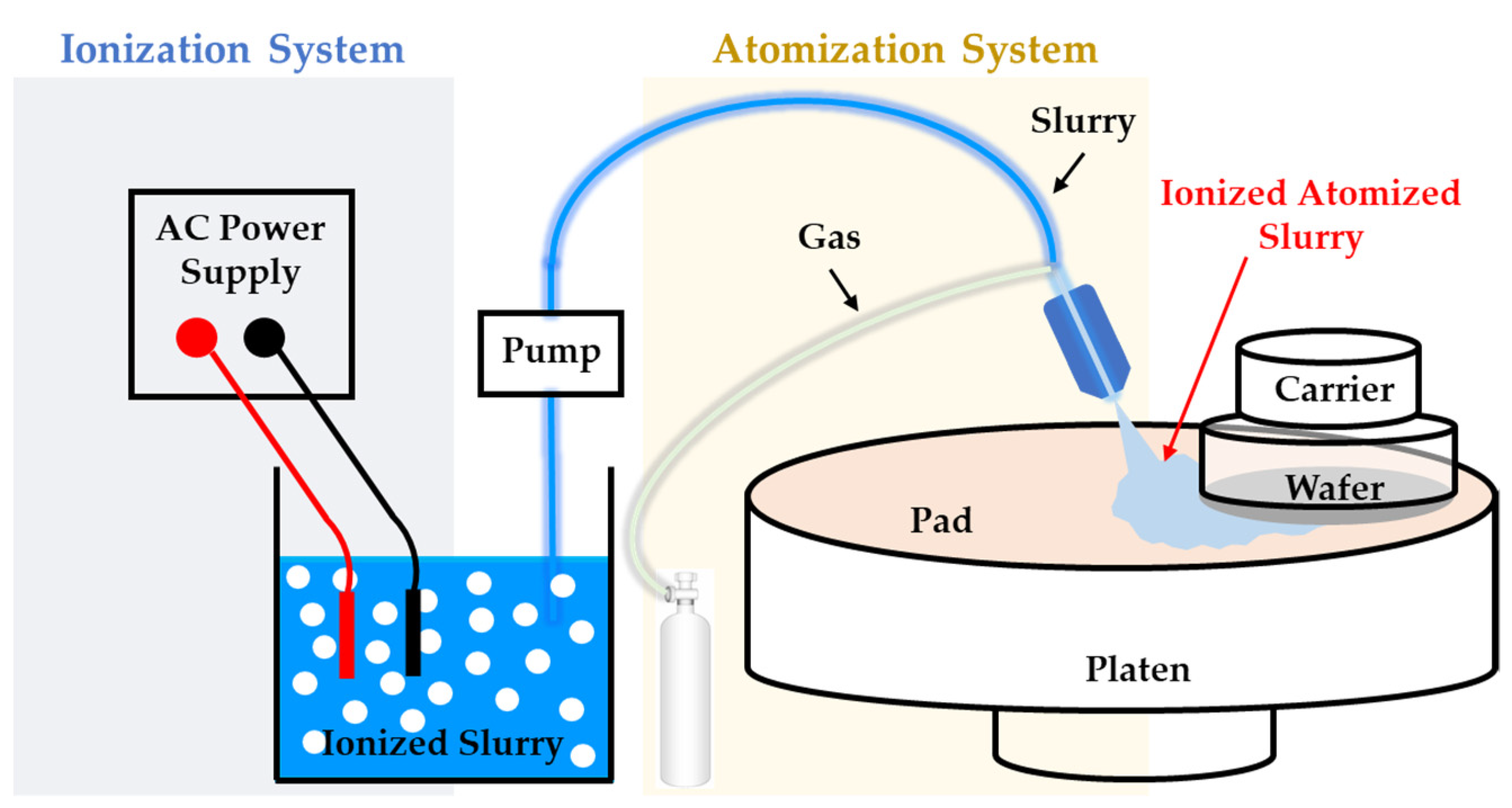
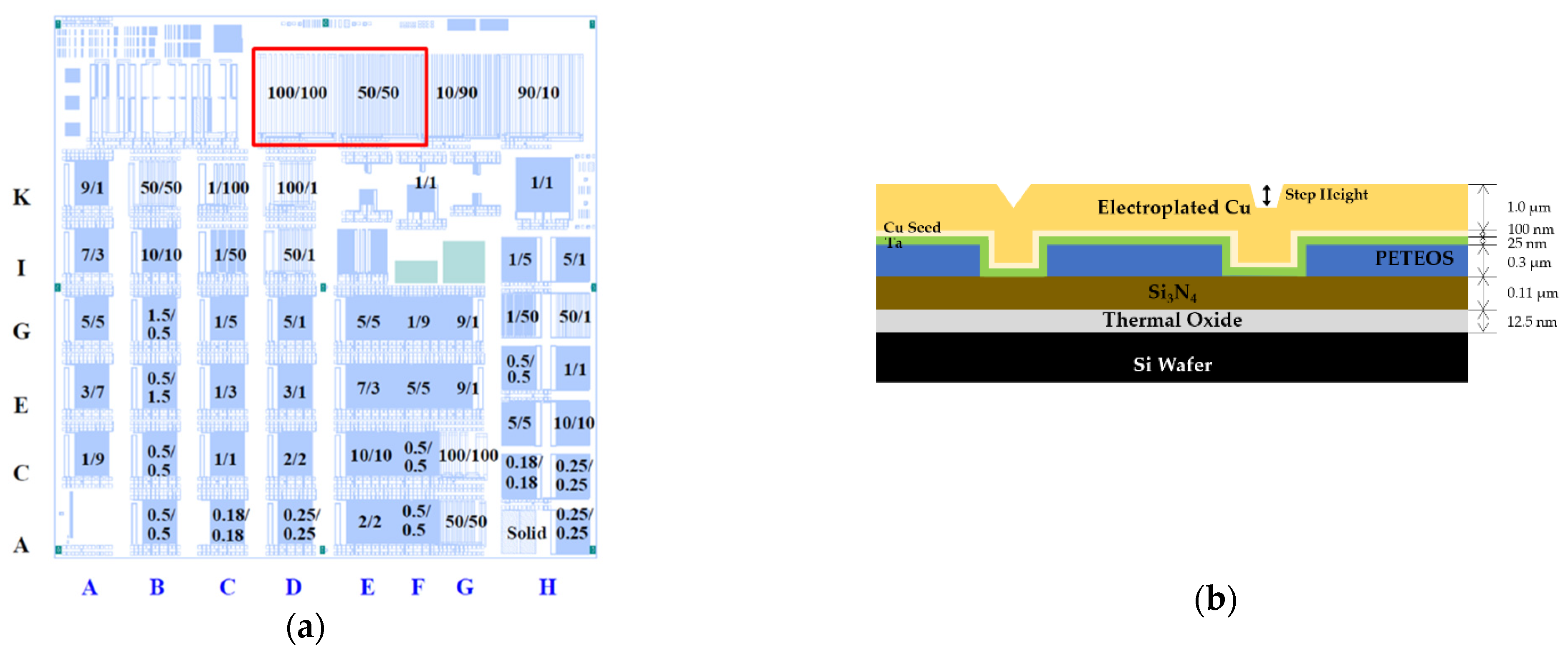
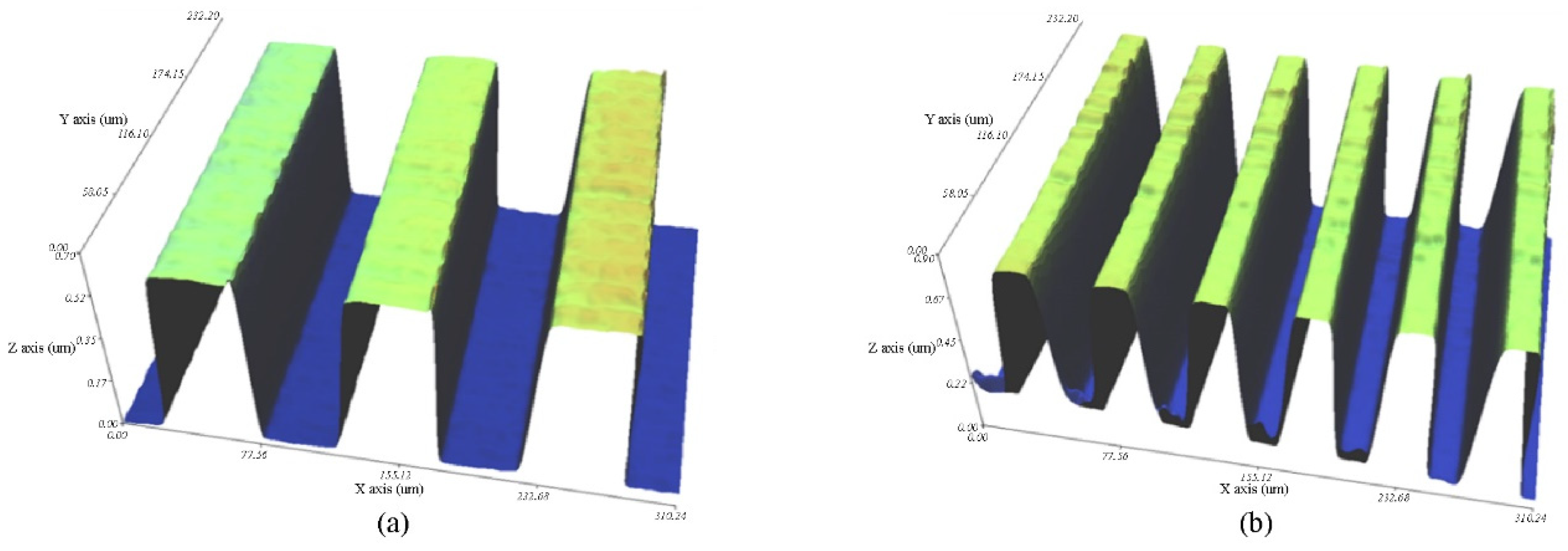

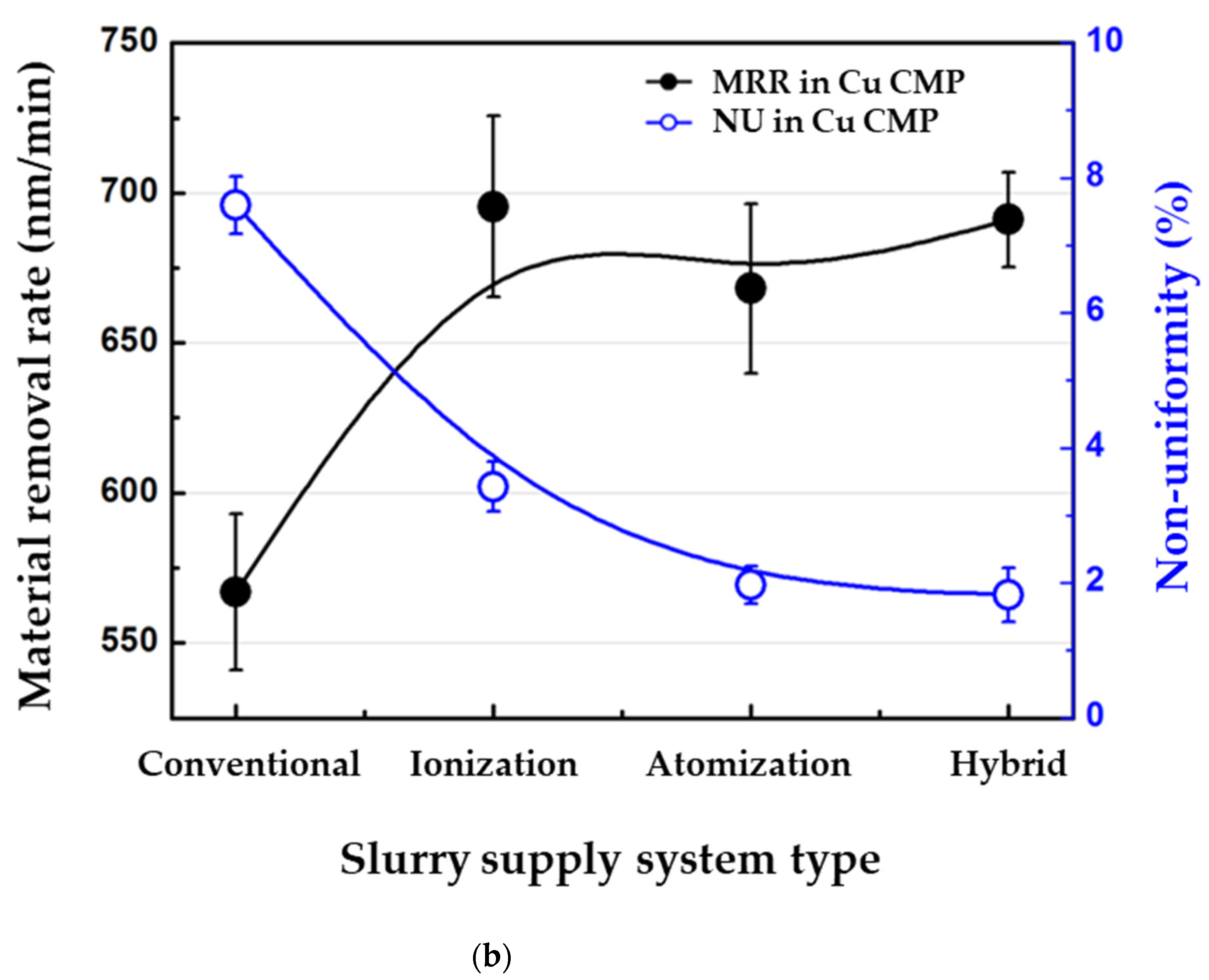
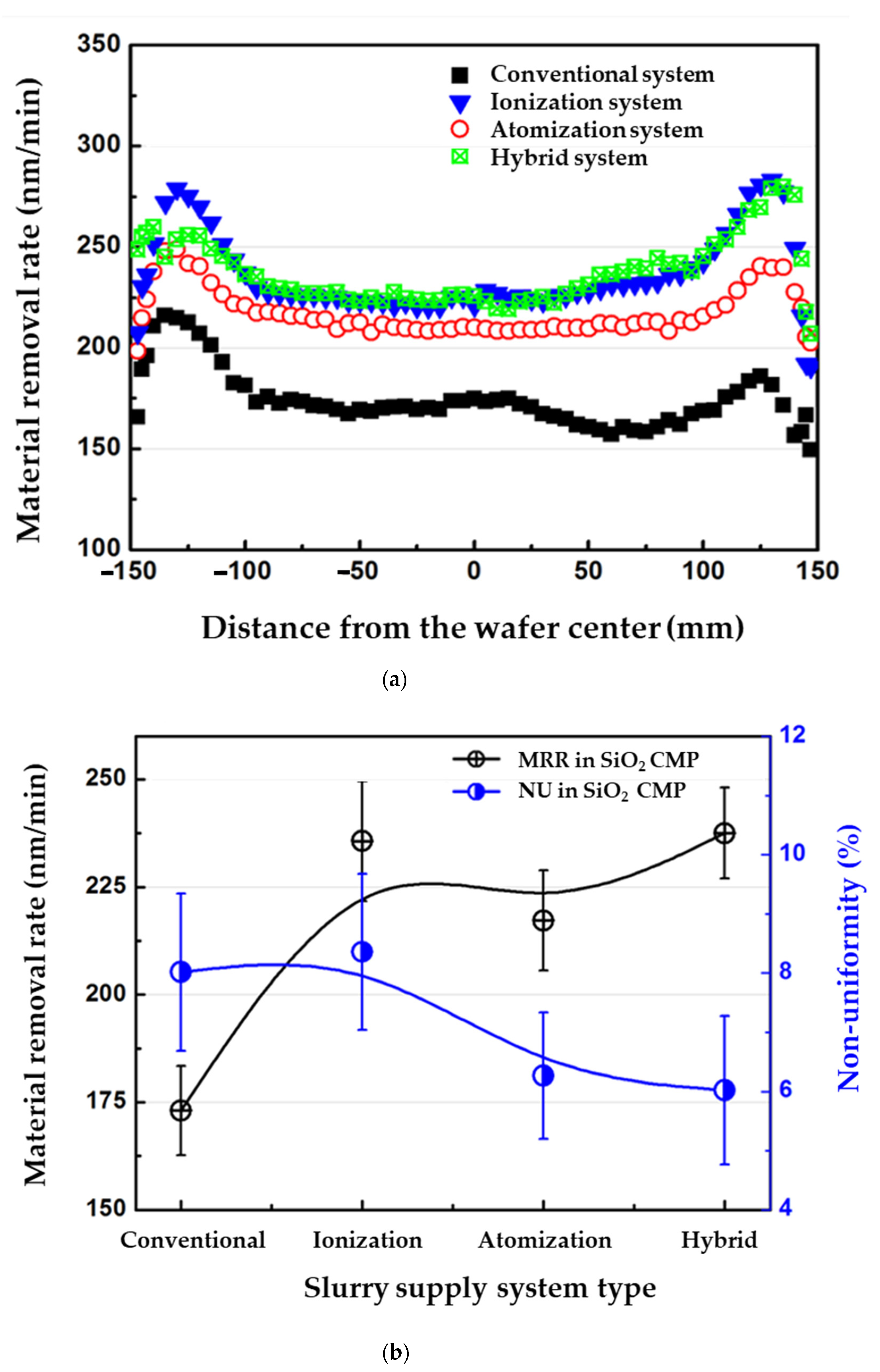
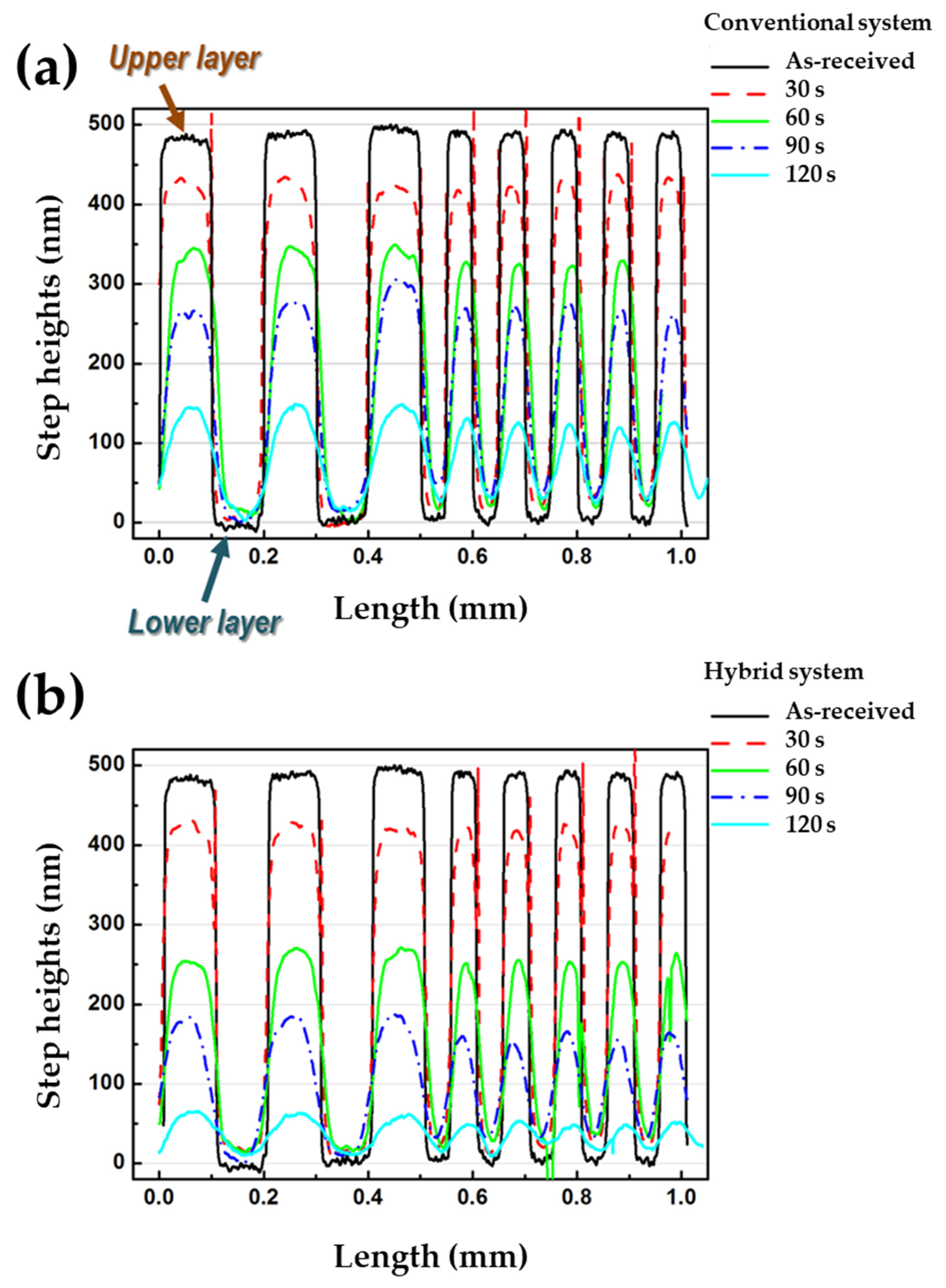
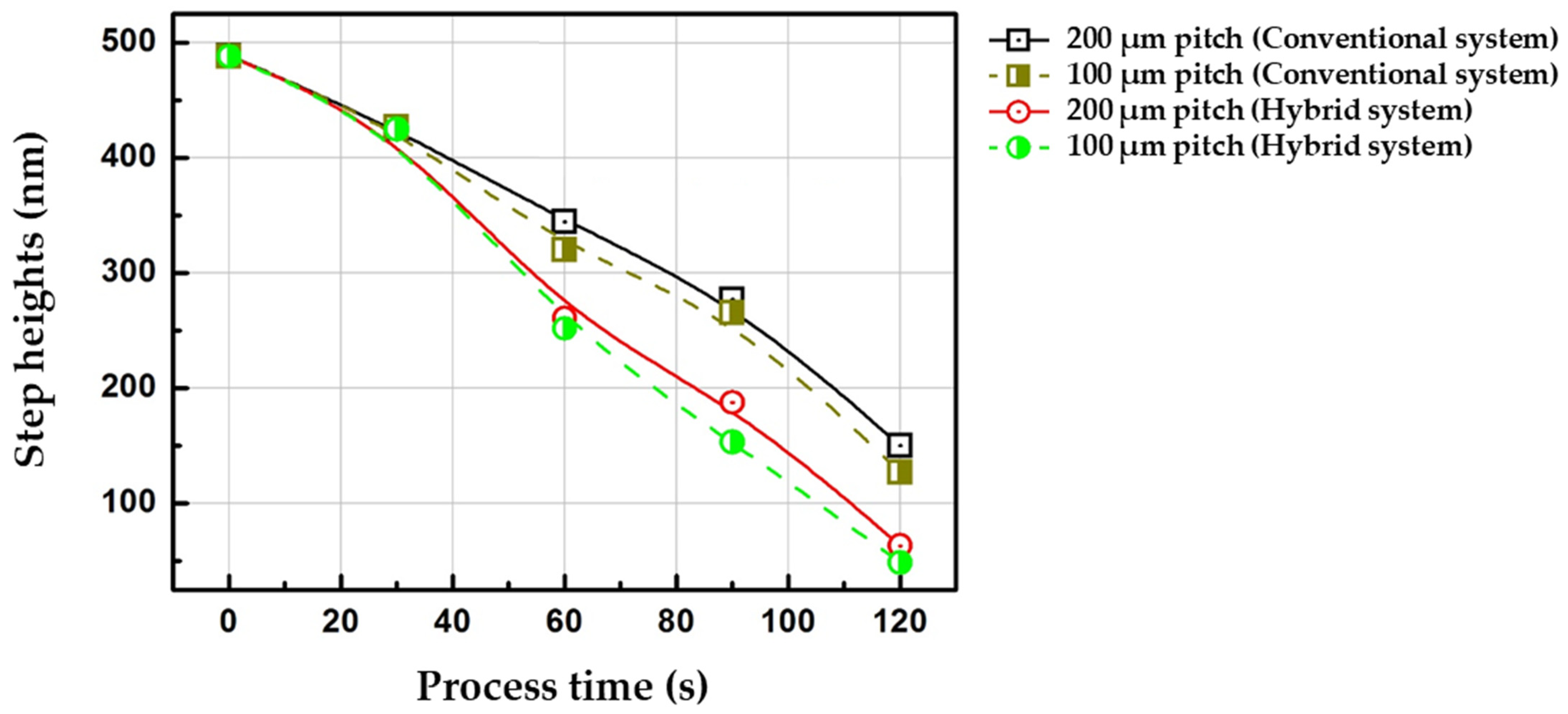
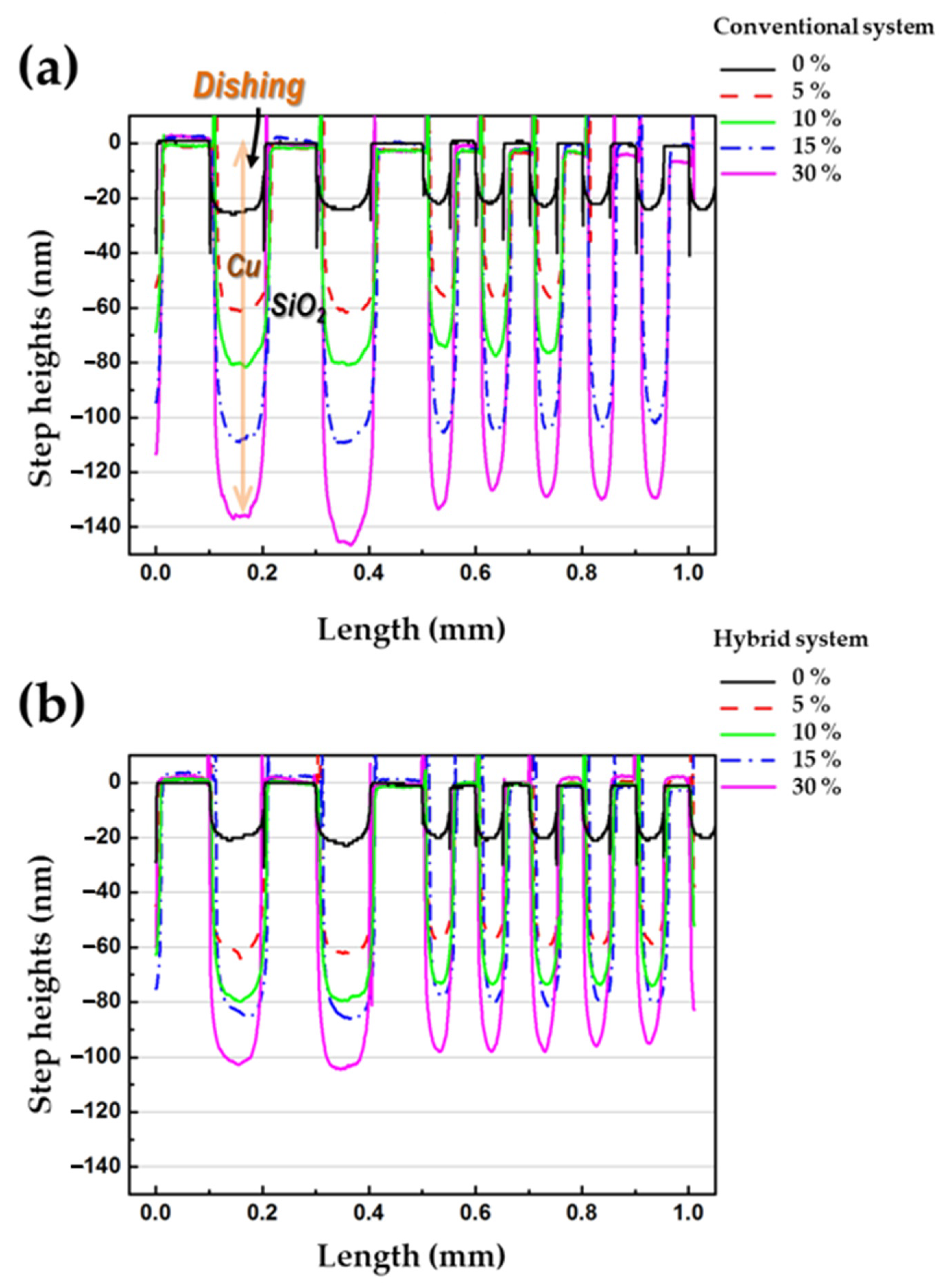
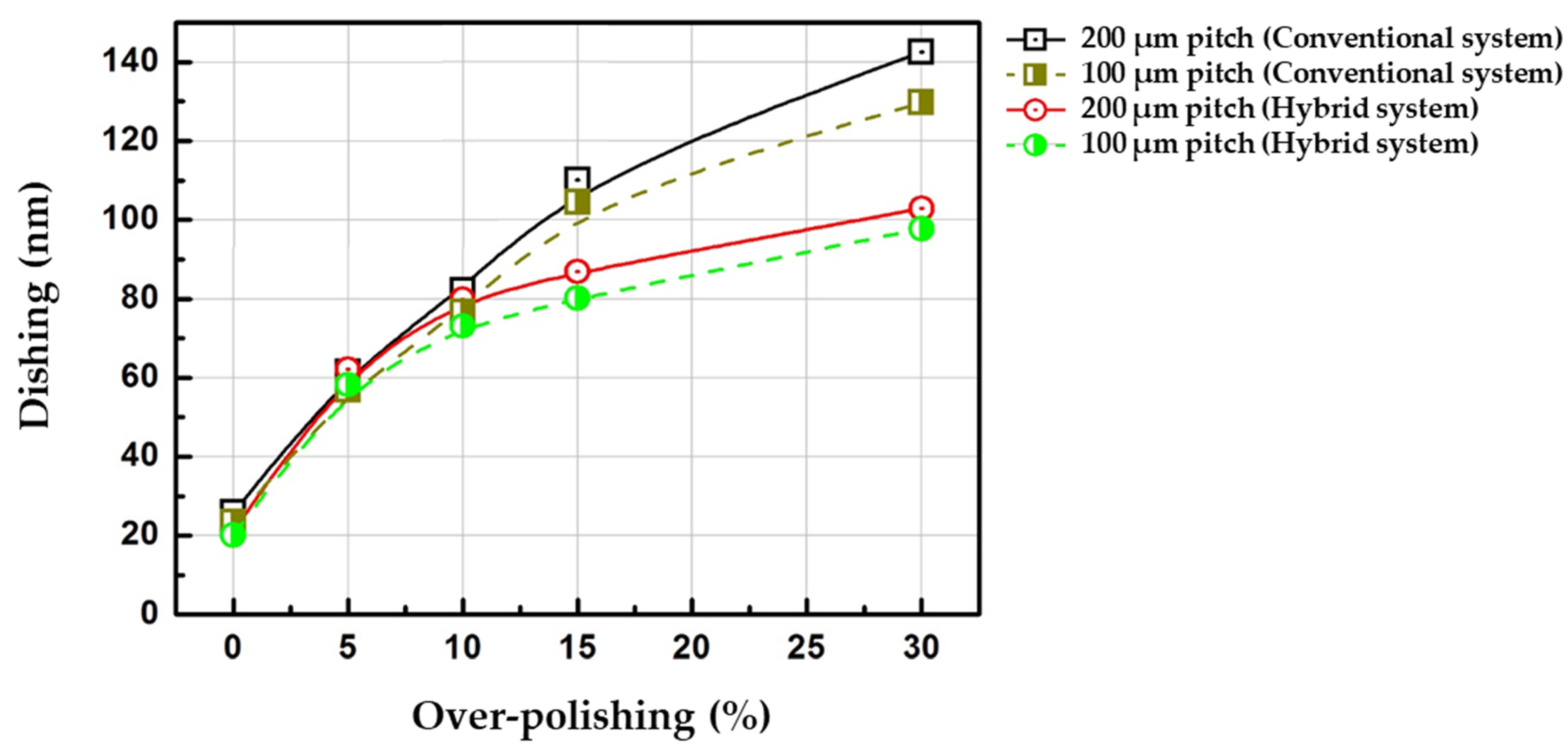
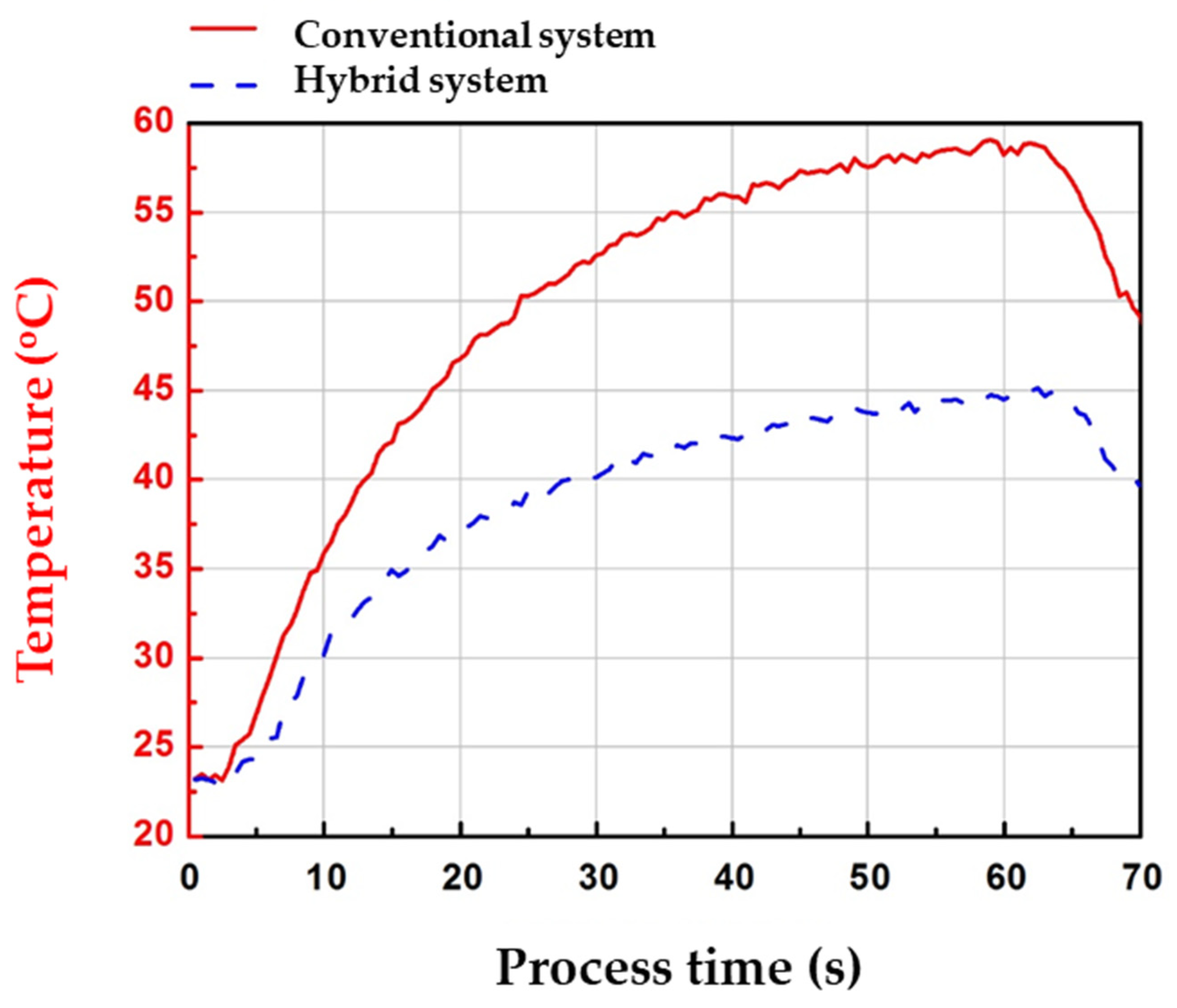
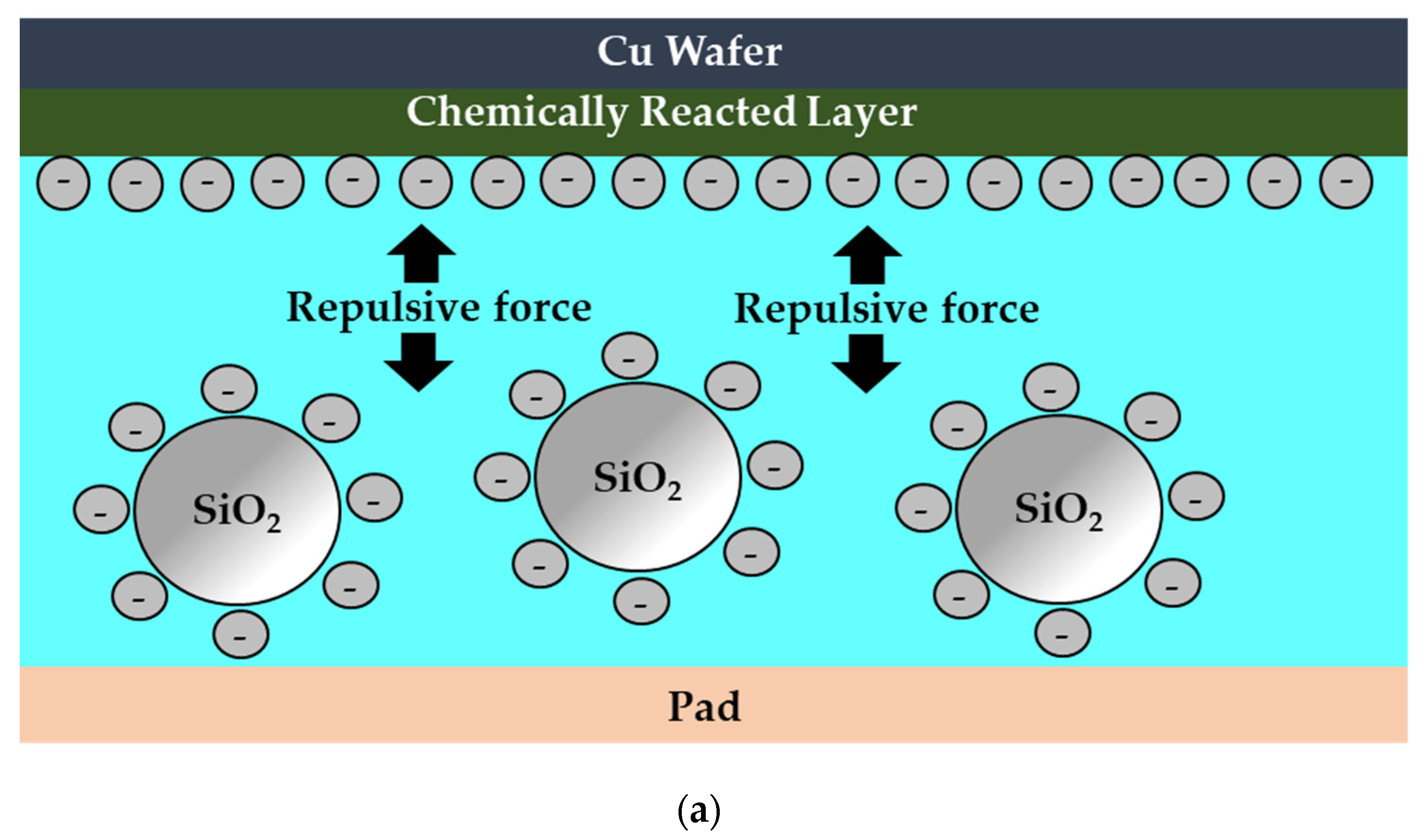
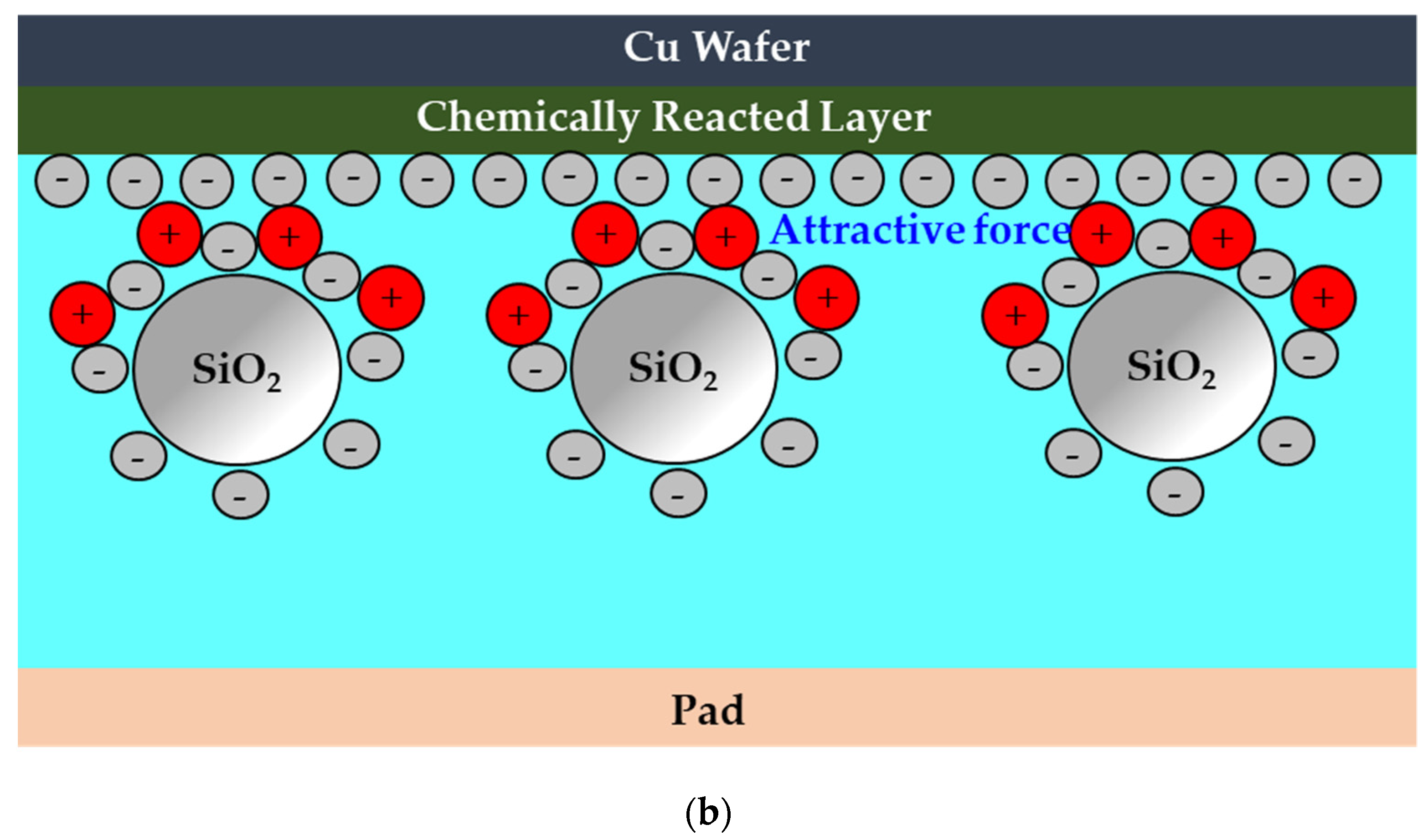
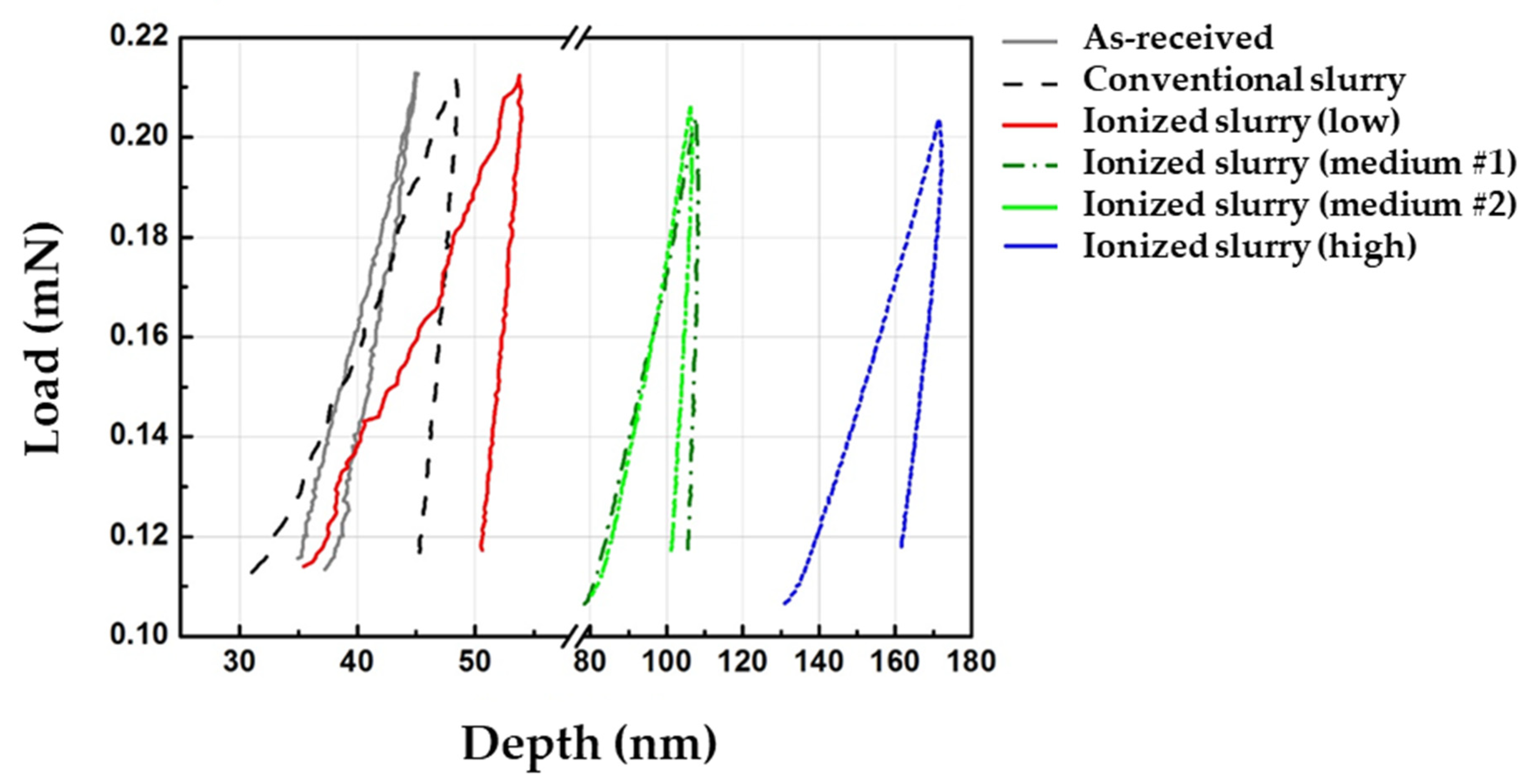
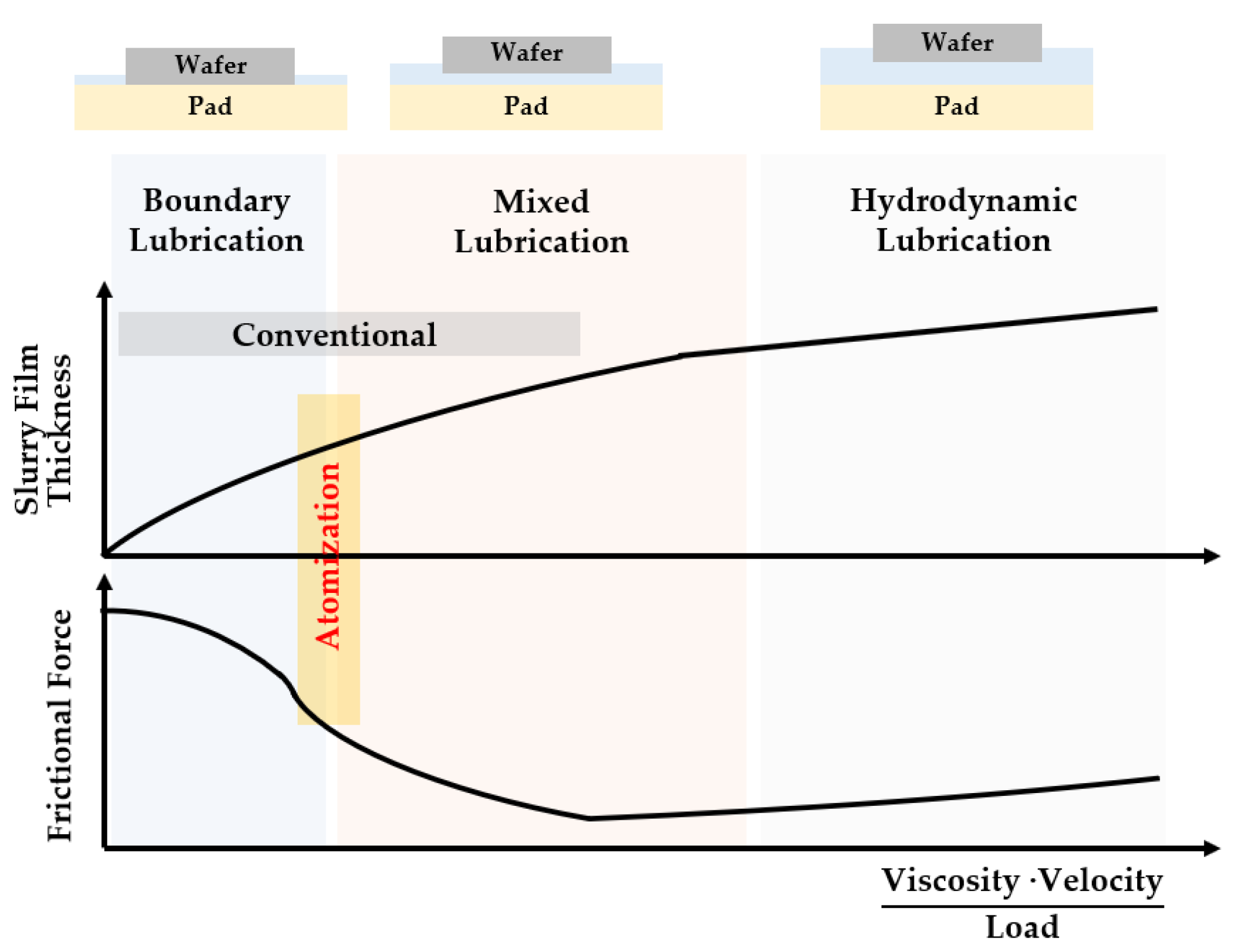
| Parameters | Conditions | |
|---|---|---|
| Machine | POLI-762 (G&P Technology Inc., Korea) | |
| Velocity | Carrier: 93 rpm; Platen: 87 rpm | |
| Wafer | 300 mm 1.5 µm Cu | 300 mm 2 µm SiO2 |
| Pressure | Wafer: 20 kPa | Wafer: 30 kPa |
| Retainer: 30 kPa | Retainer: 40 kPa | |
| Slurry type | Colloidal silica slurry | Ceria slurry |
| Gas type | O2 | N2 |
| Gas pressure | 0.05 MPa | |
| Slurry nozzle | Full-cone spray nozzle (twin-fluid) | |
| Power supply | AC | |
| Voltage | 30 V | |
| Slurry flow rate | 160 mL/min | |
| Conditioning | In situ | |
| Process time | 1 min | |
Publisher’s Note: MDPI stays neutral with regard to jurisdictional claims in published maps and institutional affiliations. |
© 2021 by the authors. Licensee MDPI, Basel, Switzerland. This article is an open access article distributed under the terms and conditions of the Creative Commons Attribution (CC BY) license (http://creativecommons.org/licenses/by/4.0/).
Share and Cite
Jo, H.; Lee, D.S.; Jeong, S.H.; Lee, H.S.; Jeong, H.D. Hybrid CMP Slurry Supply System Using Ionization and Atomization. Appl. Sci. 2021, 11, 2217. https://doi.org/10.3390/app11052217
Jo H, Lee DS, Jeong SH, Lee HS, Jeong HD. Hybrid CMP Slurry Supply System Using Ionization and Atomization. Applied Sciences. 2021; 11(5):2217. https://doi.org/10.3390/app11052217
Chicago/Turabian StyleJo, Hoseong, Da Sol Lee, Seon Ho Jeong, Hyun Seop Lee, and Hae Do Jeong. 2021. "Hybrid CMP Slurry Supply System Using Ionization and Atomization" Applied Sciences 11, no. 5: 2217. https://doi.org/10.3390/app11052217
APA StyleJo, H., Lee, D. S., Jeong, S. H., Lee, H. S., & Jeong, H. D. (2021). Hybrid CMP Slurry Supply System Using Ionization and Atomization. Applied Sciences, 11(5), 2217. https://doi.org/10.3390/app11052217









